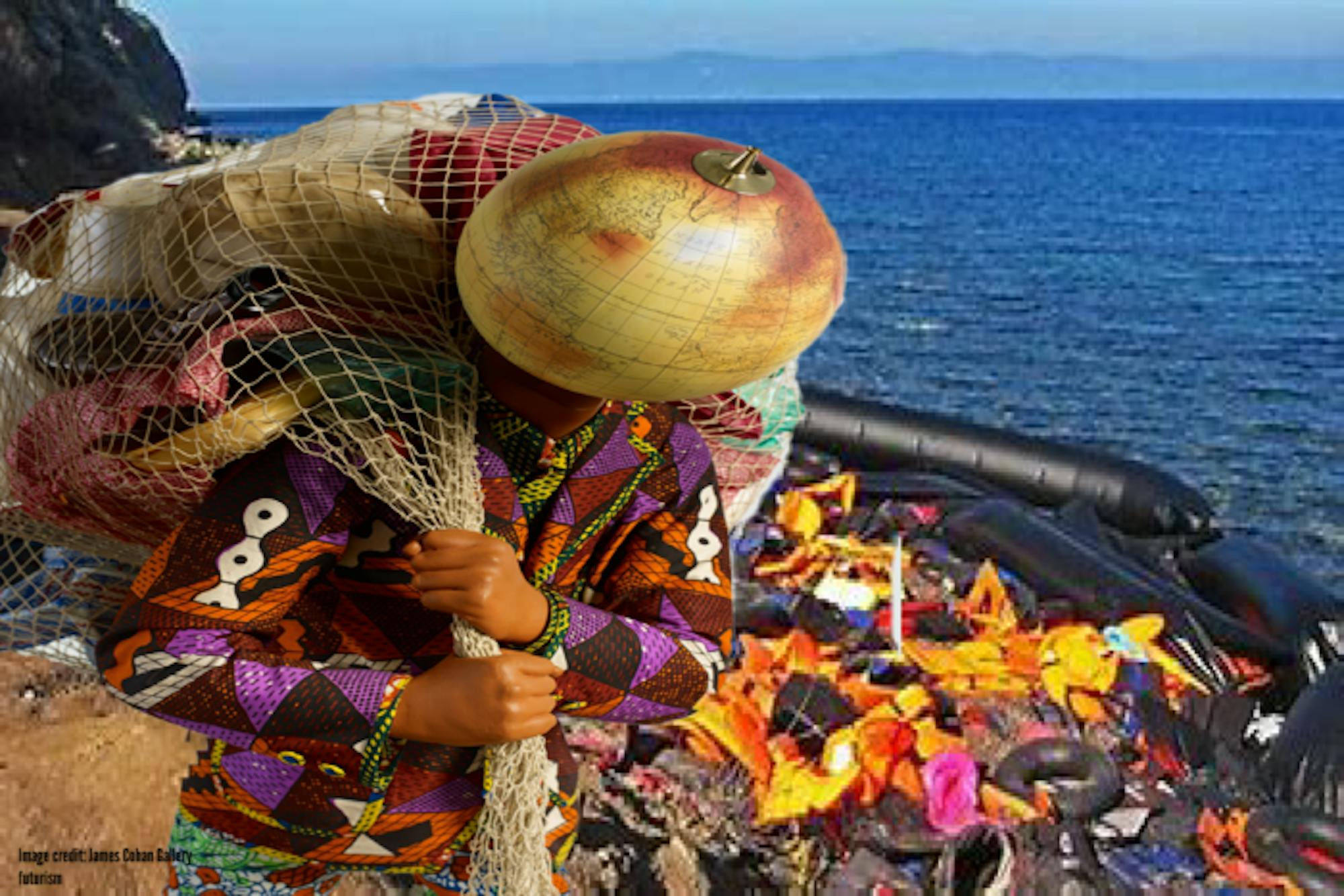
I am very excited to announce the new acquisition at the Snite Museum of Art: “Earth Kid (Boy)” (2020) by Yinka Shonibare CBE. This incredibly compelling sculpture by the Nigerian-British artist is a very special addition to the Snite’s collection of contemporary art, and it’s something that should be celebrated!
Shonibare is currently one of the most exhibited, collected and sought after artists in the world. His work is primarily focused on issues of colonialism, race, disabilities and identity (cultural, social, gender and sexual), and Shonibare addresses such issues through the use of photography, sculpture and textiles.
“Earth Kid (Boy)” (2020) — acquired to coincide with Notre Dame’s 2021-22 forum, “Care for Our Common Home: Just Transition to a Sustainable Future” — is not only an exploration of climate change, but also an analysis of youth’s role in Earth’s preservation.
When approaching this piece, the first thing you’ll notice is how small the figure is, even when it’s on a low pedestal. Its scale is impressive, and as you move around the small boy you find yourself lost in the textures, colors and dimensions of the work. Looking through the netted bag — assumed to be a fishing net — you find an abundance of trash. Did the boy go fishing and catch trash instead? Did the boy intentionally gather the garbage to aid in ocean clean-up? These are just a few questions surrounding the ambiguity of the figure’s intentions, but it is evident that his knapsack is heavy.
The posture and the gait of the boy’s walk implies struggle and/or determination, his life-like hands firmly gripping the net while his head (or the globe) is tilted down towards his feet. Unlike most of Shonibare’s work, the figures in this series have globes as heads, indicating that the weight on the boy’s shoulders are a universal issue rather than a individual one.
Moreover, it’s important to note the clothing on “Earth Kid (Boy)” (2020) because this is often overlooked in the shadow of the net on his back. The ways in which Shonibare uses fiber as medium is vital to his works; clothing is an important component of defining identity. “The use of costume as disguise introduces doubt and uncertainty in the sphere of identity ... It inserts postmodern doubt and fragmentation within itself.” Clothing acts as a physical division between ourselves and others. It’s based in the idea of integrity of the body, and when Shonibare recreates iconic images, stories and paintings in headless forms adorned in beautiful wax fabric, he brings to the forefront the amount of “wealth [that] was derived from the exploitation of the colonies” while “draw[ing] attention to greediness regardless of race and times.”
Furthermore, Shonibare tackles the questions of race and sexuality directly, and his use of satire is implemented to create a powerful juxtaposition — “The beautification of the obscene.” The artist’s common use of headless mannequins has a double meaning; indeed, it’s a reference to the beheading of the aristocrats during the French Revolution, but more powerfully, it “may also be analyzed as a means of destabilizing identity construction and focusing attention on poses, gestures, and costumes.”
Interestingly, Shonibare’s work emphasizes parody as a strategy of re-appropriation — a key figure in postcolonial art — and his use of wax fabric draws attention to colonialism, nationalism and globalism. Textiles themselves were “some of the first globally traded goods, making them an ideal vehicle to critique the values of global capitalism and homogeneity of production.”
If you are interested in visiting “Earth Kid (Boy)” (2020), you can visit him Tuesday through Friday in the Snite Museum of Art’s Works on Paper Gallery, just inside the museum’s doors. It's an inspiring piece, and I urge you to take some time admiring every detail and thinking about the ways the youth play a role in saving our environment.
The new home for ‘Earth Kid (Boy)’ at the Snite Museum of Art
Makayla Hernandez | The Observer
Makayla Hernandez | The Observer








